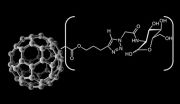Low breast density in mammography worsens breast cancer prognosis
2015-03-12
(Press-News.org) Very low mammographic breast density worsens the prognosis of breast cancer, according to a recent study from the University of Eastern Finland. Disease free survivals as well as overall life expectancies were significantly shorter in women with very low-density breasts in comparison to women with high density breast tissue. The lower the breast tissue density, the less fibroglandular tissue there is compared to fat tissue.
In the future, these findings may prove significant for the assessment of breast cancer prognosis and treatment planning.
The study involved 270 breast cancer patients at Kuopio University Hospital, aged between 32 and 86 years. Breast tissue density was analysed on the basis of mammographic images obtained at the time of diagnosis. The researchers determined the proportion of dense glandular tissue of the overall breast area. Breast tissue density was categorised as low when the proportion of glandular tissue was below 25%, and as very low when the proportion of glandular tissue was below 10%. The study was a six-year follow up focusing on the effects of breast tissue density and other mammographic features on breast cancer prognosis.
The results indicate that a very low breast tissue density is an independent poor prognostic factor of breast cancer, regardless of patients' age, menopausal status or body mass index. Out of the women with very low breast tissue density, 70.7% were alive at the end of the six-year follow-up, whereas out of women whose proportion of glandular tissue was higher than 10%, 87.7% were alive at the same time. Lower breast tissue density was also associated with more aggressive higher grade tumours.
The results are particularly interesting because dense breast tissue has long been known to be associated with an increased risk of cancer. "It is difficult to detect small tumours when screening dense breasts, and this results in a higher occurrence of clinically detectable interval cancers. In the U.S., it is nowadays mandatory to let patients know if they have dense breast tissue. This allows them to choose whether they wish to have further tests, for example a screening ultrasound," says Professor Ritva Vanninen.
"It could be assumed that dense breast tissue would also be associated with a poorer prognosis in patients with a recently diagnosed breast cancer. However, this was not the case in our study, as low breast tissue density specifically weakened the prognosis."
INFORMATION:
Research article:
Masarwah A1, Auvinen P, Sudah M, Rautiainen S, Sutela A, Pelkonen O, Oikari S, Kosma VM, Vanninen R. Very low mammographic breast density predicts poorer outcome in patients with invasive breast cancer. European Radiology. 2015 Mar 4 (Published ahead of print).
ELSE PRESS RELEASES FROM THIS DATE:
2015-03-12
WASHINGTON, DC, March 12, 2015 -- Actresses need to be pickier than men about with whom they work if they want to survive in the movie industry, suggests a new study.
"My research indicates that women in the film industry suffer a lack of access to future career opportunities when they tend to work with people who have collaborated frequently in the past," said Mark Lutter, lead author of the study and head of the "Transnational Diffusion of Innovation" Research Group at the Max Planck Institute for the Study of Societies (MPIfG) in Germany.
Titled, "Do Women Suffer ...
2015-03-12
WASHINGTON, D.C., March 12, 2015 - The American Educational Research Association has published a special edition of its peer-reviewed journal Educational Researcher (ER) devoted to examining value-added measures (VAM).
Since 2009, President Barack Obama's Race to the Top initiative has brought on a wave of value-added-based accountability measures, with value-added now embedded in policy in more than 30 states. AERA's journals have examined the validity and reliability of value-added measures over the past six years. This special issue of ER considers the key questions, ...
2015-03-12
Materials resulting from chemical bonding of glucosamine, a type of sugar, with fullerenes, kind of nanoparticles known as buckyballs, might help to reduce cell damage and inflammation occurring after stroke. A team from the Max Planck Institute in Germany has tested this on mice, opening the door to potential new drugs for the cerebrovascular accident.
The majority of stroke occurs when the blood vessels that reach the brain are blocked by clots or fatty deposits which decrease the flow of blood towards its cells. It is then that an ischemic attack occurs, a pathology ...
2015-03-12
Harvesting fire-killed trees is an effective way to reduce woody fuels for up to four decades following wildfire in dry coniferous forests, a U.S. Forest Service study has found.
The retrospective analysis, among the first to measure the long-term effects of post-fire logging on forest fuels, is published in the journal Forest Ecology and Management.
"Large wildfires can leave behind thousands of acres of fire-killed trees that eventually become fuel for future fires. In the past, post-fire logging has been conducted primarily to recover economic value from those fire-killed ...
2015-03-12
Loneliness may be a fundamental part of the human condition, but scientists have only recently begun exploring its causes, consequences, and potential interventions. A special section in Perspectives on Psychological Science, a journal of the Association for Psychological Science, aims to bring these strands of inquiry together, presenting a series of articles that review the current state of scientific research on loneliness.
The section, edited by psychological scientist David Sbarra of the University of Arizona, investigates loneliness across multiple levels, from ...
2015-03-12
CHESTNUT HILL, MA (March 12, 2015) Targeting deadly, drug-resistant bacteria poses a serious challenge to researchers looking for antibiotics that can kill pathogens without causing collateral damage in human cells. A team of Boston College chemists details a new approach using a "warhead" molecule to attack bacteria -- and spare healthy human cells -- by targeting a pair of lipids found on the surface of deadly germs, according to a report today in the journal Nature Communications.
The new strategy required the researchers to develop a novel type of "warhead molecule" ...
2015-03-12
Study links oddly shaped hippocampus to poor long-term memory in former marijuana users
The longer teens used cannabis, the more abnormal the hippocampus as adults
Former users perform 18 percent worse on long-term memory test
Cannabis affects short and long-term memory
CHICAGO --- Teens who were heavy marijuana users - smoking it daily for about three years -- had an abnormally shaped hippocampus and performed poorly on long-term memory tasks, reports a new Northwestern Medicine study.
The hippocampus is important to long-term memory (also known as ...
2015-03-12
A team of scientists from the John Innes Centre (JIC), the National Institute of Agricultural Botany (NIAB) and The Sainsbury Laboratory (TSL) have successfully transferred a receptor that recognises bacteria from the model plant Arabidopsis thaliana - a dicot, to wheat - a monocot. They showed that the receptor can trigger a defensive response and confers increased resistance to bacterial disease. The research findings demonstrate that the signalling pathways or circuitry downstream of the receptor are conserved between evolutionary distant monocots and dicots.
Drs Henk-jan ...
2015-03-12
Researchers from ZSL and the Shaanxi Normal University, Xi'an, surveyed 43 farms in China and worked with the Shaanxi Province Fisheries Office to investigate the Chinese giant salamander farming industry. They found that, although only a decade old, the industry houses millions of animals and is a major contributor to the Chinese rural economy. The farming industry however, poses a number of threats to the Chinese giant salamander, but also has potential to benefit the species.
Wild salamanders are illegally poached to supplement farmed populations which often do not ...
2015-03-12
The indoor air quality in nursing homes has a serious effect on the lung health of elderly residents, according to the findings of a new study.
The study, which is published online today (12 March 2015) in the European Respiratory Journal, is the first to detail the negative effects of poor air quality in nursing homes across several countries.
Researchers from the EU-funded GERIE research project collected data on five indoor air pollutants: PM10, PM0.1, formaldehyde, NO2 and O3. These pollutants come from a range of sources including heaters, building materials, ...
LAST 30 PRESS RELEASES:
[Press-News.org] Low breast density in mammography worsens breast cancer prognosis

